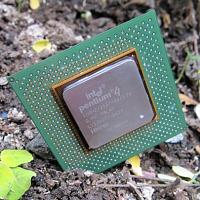-
Posts
79 -
Joined
-
Last visited
Awards
This user doesn't have any awards
Profile Information
-
Gender
Not Telling
-
Location
D:\Users\Michael
-
Member title
Junior Member
System
-
CPU
Intel Core i3 2100
-
Motherboard
ASUS P8Z68-M PRO
-
RAM
Kingston 1333 8gb(4x2)
-
GPU
Asus GTX 1050 Ti
-
Case
CM Storm Scout 2
-
Storage
WD Caviar Blue 1tb & OCZ Vertex 3 60gb
-
PSU
CM GX550
-
Display(s)
LG IPS237
-
Cooling
Some sort of japanese-brand mini tower w/ 2 heat pipes cooler
-
Keyboard
Rakk Ilis w/ Gateron Yellow
-
Mouse
Logitech G304
-
Operating System
Windows 8.1 u1
Recent Profile Visitors
The recent visitors block is disabled and is not being shown to other users.
Michael's Achievements
-
I have a spare ssd from another PC(with windows installed) and I want to use it for just meantime only. After putting it on the bottom of the boot priority order and even disabling it on BIOS, my PC still boots on that ssd. I can only boot to my main ssd by choosing it on boot override. Here's the screenshot of my BCD.
-
Not sure if it's already posted before but a video about performance gains of a gpu from driver updates over time, from the version of driver when that specific GPU initialy launched, up to the latest version of driver(at the time of that recording of course). I wanna see this especially on ARC gpu and see how good Intel optimizes it's driver over time.
-
I've used an i5 2400 which is a 95w tdp processor and a 1050 ti which have 75w tdp on Cooler Master GX550w PSU. It did run without any problems. The processor and gpu that you have consumes a little bit less power than mine so that 550w psu should be plenty enough.
-
Upon researching further, the clue that I've got is I found that theres a version of this kinda same mobo with m.2 slot, the a320-a pro m2 and upon looking on it's bios download, the nomenclature of the bios is kinda same too with the bios on a320-a pro "non - m2"(the mobo that I have) so there's really a chance that it may really work, I guess?
-
Yes I know, I can use a SATA SSD pretty much any motherboard with SATA port. I just preferred not to have another cable and the benefit of having fast read and write speeds of NVME SSD. I'm currently eyeing for a B550 or X570 motherboard which have heaps of m.2 slots. I might be also considering a compact ITX build which may introduce a problem if I have a 2.5" drive if I use a very small case.
-
BSOD happens right after the windows loading screen and sometimes, it just freezes. Theres a couple of instances too that it will just shutdown after the loading screen. This includes both windows installation from a usb flash drive and on ssd with fully installed windows. I tried also ubuntu installation usb and it also gave a kernel panic. Tried also it with hirens with same result. The only thing that it can boot to is with memtest86. Here are the BSOD error codes that I've recorded: -IRQL _LESS_OR_EQUAL -CRITICAL_PROCESS_DIED -UNEXPECTED_KERNEL_MODE_TRAP -FAULT_IN_NON_PAGED_AREA -BSOD with just error code: 0xc000021a At a first glance, it looks like the RAM is the one who is wreaking havoc but I already use a known good RAM stick with same result. I also tried using a different mobo, same thing happens. It all boils down to the processor but I'm still having a hard time believing that it is really the CPU is at fault here. lol. Aside from the CPU, I also used the same power supply and gpu to the "other" mobo but it will be the least likely causing all of the problem because I'm currently using it to another system without having issue. I also explored the BIOS particularly the settings that has something to do with secure boot. I also disabled the fast boot. The hardware in question here is an i5-6500 and 2 B150 motherboards: MSI B150m nightelf and ASUS B150 Pro Gaming. 481634759_Vid20220411235142(0)-1.mp4
-
I'm trying to access files on a faulty HDD. Already tried it with conventional way wherein, you turn off everything first and connect the HDD. The problem with this is I'm getting stuck at BIOS splash screen. Already looked up on BIOS and confirmed that my mobo is sata hotswap capable. Now my question is with everything powered on and whatnot, how do I properly connect the HDD? Do I need to connect the SATA data cable first then the SATA power or the other way around? Or maybe put the data cable in first before turning it on and then connecting the SATA power after I log on to Windows? As for the HDD itself, HDDSentinel already found weak sectors on it and the PC is having random freezes before. And it finally gave up a ghost and it's now can't go past BIOS splash screen whenever it's attached on the mobo. I already sort it out with brand new HDD and now I'm in search for solution on retrieving my files from that faulty HDD. Any kind of useful input is much appreciated. Thanks!
-
I'm currently sporting a Core i5 2400 processor on an age-old Z68 platform. Can I get away with just upgrading my GPU and have a sizable performance bump on sketchup vray and lumion? I know that any AAA titles can't have justice on this. lol. I'll gonna overhaul my whole system later down the line, I just want for now the quickest route to improve my works. Thanks.
-
Yeah. That's what I'm thinking too because if the GPU's the one who's having issue (tho there's a debug led on the mobo itself and it is throwing a GPU error), it will boot normally and will just default to Intel's HD graphics as primary display. I'll just gonna try to use my own PSU to his PC and see if the issue still persist. Thanks guys.
-
A friend called me and I went to his place then he told what's goin' on with his PC. Fan spins and the lights... uhmmm.., lights up but no display. Back light on keyboard(and num lock) and mouse won't light up as well. When you press the power button, it'll just turns OFF in just a snap, not like a normal shutdown wherein it will wait a few seconds before turning off completely. All of that until you remove and connect back again the 6-pin on the GPU and it will magically boots up like nothing happened. It is running w/ a i7 2700k, Biostar TZ68K+, GTX 1060, and 2 sticks of 4gb RAM. Forgot what's PSU on it. We already did the good ol' reseating, cleaned the contacts, blow air to remove some dust, and even reapply thermal paste both the GPU and CPU.
-
You can try a 3rd party partition manager (I use EaseUS Partition Master personally) or maybe, you could try putting it on a Linux system and see if you can format it there.
-
Hi guys, my friend has this mobo and he insist that his mobo can only accept a nvme m.2 because he is using a Ryzen 5 1400 and he thinks that SATA m.2 ssd will only work if he has an AMD Athlon™ 200-series/ 7th Generation A-series or Athlon™ APU. From what I understand on what stated on specs: He can use SATA m.2 ssd as well. The 2nd asterisk says if he had an AMD Athlon™ 200-series/ 7th Generation A-series or Athlon™ APU, he can only use a SATA m.2 ssd. Which one of us who understand it correctly? Thanks!
-
We have here a smart TV capable of 4k resolution but just only for 30hz with really really terrible input lag making it unbearable for playing games. And now, I'm just wondering if it is possible to replace it's scaler board with one with interfaces capable of running 4k at 60hz (like hdmi 2.0 or display port), and without post-processing eliminating(or will greatly reduce) the input lag and make it "feel" like a proper desktop PC monitor. Is there a "generic scaler board" that can be hooked up on any lcd panel? Thanks....




